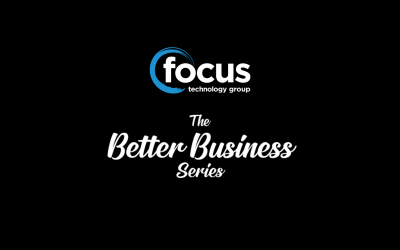Have you grown out of your systems?

The latest MYOB Enterprise Insight Reports suggest 31,000 New Zealand businesses have a turnover of more $5 million per year and employ more than 20 staff. It has taken a huge amount of work and investment from the owners of these companies to get there and, for many, their business is predicted to grow.
Is this your business?
If so, you may find that keeping on top of the workload is challenging all levels of your business. Mistakes can start to creep in and your legendary service to your clients can start to show cracks as the business gets busier and busier.
If you are in this situation, you may be finding you are spending more time than you would like wondering how this happened.
It may be because you are still operating the way you started.
Most large businesses started out small. Maybe you initially only had two or three staff – or maybe it was just you in the spare bedroom!
Your stock control was done on spreadsheets, accounts on inexpensive or free software designed for small businesses, and since you are tech-savvy you also had a host of other useful applications to help run different aspects of your business.
In time, your business started to grow and you employed some staff members to help. Under the pressure of growth your staff began to find it difficult to keep up with everything. They became stressed, overworked and unhappy.
Simply employing more people didn’t seem like the solution – the expense of bringing on more staff would only put a band aid on the problem and not actually solve the core issues.
Quite simply, you had outgrown your systems.
What works in the beginning simply doesn’t continue to work as your business grows. The tragedy is that most business owners are so tied up in the trap of outdated systems, they don’t have time to even consider looking at making any changes, despite the fact that they would find instant relief, and a very rapid reflection in their bottom line and staff morale (and therefore staff turnover).
You need a system you can grow into.
By imagining what your business will look like in the future, you can start to appreciate which of your systems need some attention. Do that now, and you will develop business processes you can grow into, rather than what you have currently, which are processes you have grown out of.
Once you put your new processes in place, you will be able to focus on your business, your people and your future growth without the stress of worrying about getting through each day and being able to deliver what is required to your customers.
Discovering your options
Process change comes in all sizes and may or may not involve some investment. How do you know where to start?
The easiest processes to pinpoint for change are those where a task or set of tasks are repeated often, or those which require multiple steps to make a single update.
The following are some ideas to get your thought processes started:
Simple processes you can take care of right now
Automate simple things like typing – a phrase that is often typed, programme Word to do it. A quick look on Google will show you how to do this.
Organise an out of control inbox by setting up rules so that incoming emails go into folders for attention when you are ready.
There are countless simple automations you could enable which are guaranteed to lead to an instant lifting of the feeling of overwhelm and a feeling of being in control. The majority of them only take a few minutes to set up.
Reports and calculations
Let’s say that every month you manually calculate totals in categories across the business on a spreadsheet. This is an arduous task which could be reduced from hours to less than a minute if you learn to use Pivot Tables. Spend 15 minutes learning (they are easy, it doesn’t take long!) and save many many hours in the future.
For a complete solution to simplify how you look at your complex data, EziView is the answer.
Accounts Payable
Another process which is often in dire need of an overhaul is Accounts Payable. This is often inefficient and time consuming, not to mention fraught with potential errors. A typical process might include printing out invoices, matching them manually against the printed Purchase Order sheets, stamping them and sending them physically to managers for approval. Once the documents are back in the office the stock is entered into a spreadsheet and the invoices into the accounting software, and then they are filed.
You could manage all of this and cut the work required by up to 70% by automating with a tool such as Fetch.
Disparate Systems
You have parts of your business all over the place – payroll, accounts, stock, sales, budgets etc. are all on different systems. When something gets updated, you have to remember to log into the other systems to update them as they don’t ‘talk’ to one another.
An ERP system such as MYOB Advanced or MYOB Exo will bring all parts of your business together and update everything across the board. You can run reports easily and instantly to get a snapshot of how business is going.
Data entry
You have people employed whose day consists of entering data from forms, for example, timesheets, invoices, application forms, incident reports etc. This is boring work and full of potential for human error. The data is important, and mistakes are difficult to find and fix.
Consider automating this task with Fetch and allowing your staff to do more meaningful and enriching tasks that benefit your business more.
Lifting the clouds
Once you start looking at your business processes and making changes, you will find that even small changes can provide instant and noticeable results. The clouds you have been operating under will quickly and suddenly clear.
To get started identifying which processes could use an overhaul in your business, here are two questions to reflect on:
What will my business look like 5 years from now?
If my business processes remain as they are today, will they be sufficient?
If the answer is no, you really need to make some changes because the pain of growing out of your business processes is much worse than the pain of making changes to develop processes you can grow into.
Talk to our team today about finding ways to automate your business processes.

About the author: Anne Howie
Anne is a qualified business automation consultant who joined the Software team in our Christchurch branch in May 2017. As a business owner of 20 years in a previous life, she is a master at finding efficiencies and time and cost saving. At Focus, these skills are put to good use as she specialises in the implementation and support of our document automation software, Fetch.






